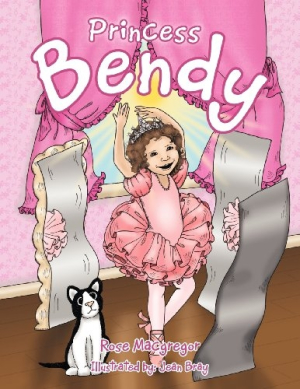Princess Bendy
Four year-old Caitlin can do amazing tricks with her bones. She can bend her thumb to touch her wrist. She can fold her fingers backward and her elbows in the wrong direction. Occasionally, however, Caitlin bends her bones by accident, and she feels a lot of pain. Princess Bendy is the story of Caitlin and her family, and their struggle to understand why her bones are so flexible.
Caitlin’s grandmother, Rose Macgregor, wrote Princess Bendy specifically to educate four- to six-year-old children (and adults) about the medical condition known as hypermobility. She hopes that the book will raise awareness about the condition and its impact on a child’s physical abilities and emotional well-being. The story fulfills its educational purpose and should prove to be an extremely helpful tool for families who struggle to explain the condition to others.
This thin book has the appearance of a medical pamphlet, rather than a children’s book, but the three full-page illustrations are jovial and colorful, and they add a lot of energy to the story. The text is dense on the page, which might make it difficult for children to explore the book on their own. Because it seems designed to engage both parents and their children in an educational experience, the book would have benefitted from a section dedicated to frequently-asked questions to aid in comprehension. Macgregor includes many facts about hypermobility throughout the book, but it would have improved the educational value of the story if there was a fact sheet at the end for quick review.
Princess Bendy is a valuable learning tool, but the story lacks creativity. While the writing is playful at times, the storytelling is too straightforward and linear and lacking in imaginative elements. Unless a child is specifically dealing with issues of hypermobility, the story may not hold her attention.
Reviewed by
Colby Cedar Smith
Disclosure: This article is not an endorsement, but a review. The publisher of this book provided free copies of the book and paid a small fee to have their book reviewed by a professional reviewer. Foreword Reviews and Clarion Reviews make no guarantee that the publisher will receive a positive review. Foreword Magazine, Inc. is disclosing this in accordance with the Federal Trade Commission’s 16 CFR, Part 255.

